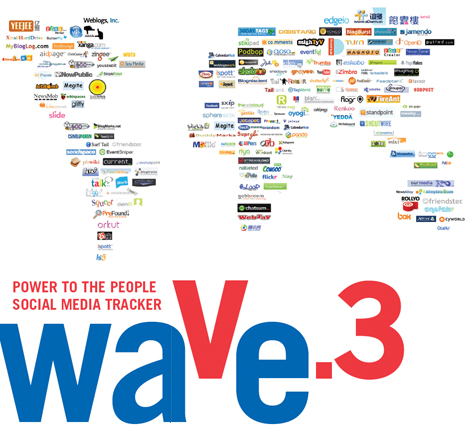One of our clients is talking to us about spending budget on creating online buzz. Naturally, she’s thinking hard about how to justify what is effectively a new cost line in her marketing budget. One option she’s thinking about is to shift resources out of the traditional PR and media relations budget to support a social media effort. But, though she really ‘gets’ the value of investment in social media, she’d like to come up with some reliable metrics for assessing ROI.
Regular readers of this blog will probably know we’ve been working with a really clued-up client for some time now, John Watton of ShipServ. We just started working with him on social media with the aim of increasing traffic and page rank for the company’s main site. John started a blog, has revamped the company’s e-newsletters and is experimenting with backlinking, LinkedIn groups, Twitter and other social media. The great news is that the stats have come in covering the period we’ve all been doing the work:
- The number of visits to the ShipServ website versus just three months ago is up 59 per cent from 10,700 to over 17,000
- Page views (ie content) are up a whopping 70 per cent from 21,000 or so to over 36,000
- Time spent on the site is up 15 per cent – which means our target audience is really beginning to engage with our content.
John’s community is pretty tight, consisting of purchasing people in shipping companies and the suppliers who sell to them so these results are great. It underscores that what makes social media buzz so effective isn’t simply participating in all the groups and forums and commenting on relevant blogs, but having something to say that matters to the community you’re trying to influence. Content really is king. Without it, Twittering and the like remains just, well…twittering.
Despite ShipServ’s great results, we probably need to be cautious about predicting hard-core ROI from social media campaigns. Caution feels like the right approach because success in social media is really more about listening to what your community is saying rather than telling it what to think. The goal is a bit more oblique: to be recognised as a relevant participant in the debate. That’s hard to measure and it can’t be gauged by the number of direct responses or click-through rates.
The good news is that the cost of implementing an online buzz programme is pretty negligible – in most cases a lot less than most offline PR programmes. And massively less than trying to get similar levels of engagement via banner advertising.
What makes getting involved in social media marketing so attractive are the numbers involved. According to the Pew Internet & American Life Project, the share of adult internet users that have a profile on an online social network site (now 35%) has quadrupled since 2005 – and these are not just 18-25 year olds poking their fiends on Facebook, but also middle-aged decision-makers participating actively in LinkedIn, Xing and others .
The stats also show that the credibility of online information sourced from social media is high: most people (I include myself) now respond much more positively to online reviews from other consumers than they do to remarks from professional reviewers or the information provided by companies themselves. And, according to Nielsen Online’s report on Social Networking’s New Global Footprint released a few days ago, social networks and blogs have become the fourth most popular online products.
This is all confirmed by Universal McCann’s recent report Social Media Tracker Wave 3. The numbers may be different but they paint the same picture.

According to Universal McCann:
- 57% have joined a Social Network, making it the number one platform for creating and sharing content
- 55% of users have uploaded photos and 22% of users have uploaded videos
- The widget economy is real – 23% of social network users have installed an application and 18% of bloggers have installed applications in their blog templates
- Blogs are a mainstream medium world-wide and collectively rival any traditional media – almost three quarters of people online have read a blog
- The blogsphere is becoming increasingly participatory – there are now 184m bloggers worldwide
- Social media impacts your brand’s reputation – 34% post opinions about products and brands on their blog and 36% think more positively about companies that have blogs.
Given all this ferment – and the many examples of progress like John Watton’s at ShipServ – it really feels like time for B2B companies to put their toe in the social media pool… and maybe to start funding these experiments from the traditional PR and media relations budget?
What do you think?

Enjoyed this article?
Take part in the discussion







Comments
Roger, Online PR Agency C&M March 22nd, 2009
The more I think about it, the more appropriate B2B is for Social Media Marketing and Online PR. In consumer land, the measurement can get very murky and contentious. In B2B land, because the samples are smaller, and the ‘conversion’ points are more pointed, it becomes so much more effective. Sign up, download, etc… all this can be pinned really easily to a new Social Media and/or Online PR campaign …in a way that buying shoes, eating Skittles and other stuff isn’t.
Stan March 23rd, 2009
You’re right. If you only have 250 customers in the world (assuming you’re selling to telcos), you probably only want to influence 20-30 people (at most) within those companies. That’s fewer than 1000 people in total. While marketing is much more than contacting your prospects directly, it’s clear that being where those people congregate on the web will help you learn quickly about their needs, interests and challenges. If you provide information and no one takes it up, then you can learn quickly that you need to change tack.
Eli S. | Vertical Measures March 25th, 2009
Very good piece, Stan. I really like that you clearly define Social Media’s ROI calculation to be quite a bit different from traditional marketing campaigns. Specifically, you said “social media is really more about listening to what your community is saying rather than telling it what to think” and you’re absolutely right. In fact, trying to sell something to the community instead of just being an active member is probably the quickest way to get people to ignore your products.
Stan March 25th, 2009
Thanks for the comment Eli. ROI seems to be a hot issue among clients right now for obvious reasons. We’re trying to find ways to explain to clients how this social media marketing stuff works. Just like you I guess.